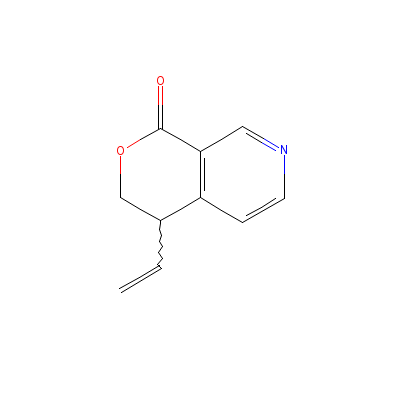| |
|
|
Botanical Name |
: |
Gentiana scabra Bunge |
English
Name |
: |
Scabrous gentian |
Synonym(s) |
: |
Gentiana fortunei J. D. Hooker, Gentiana scabra subsp. australis M. Y. Liou. |
Family |
: |
Gentianaceae |
| |
General Info
| Description |
 |
|
A perennial plant 30-60 cm tall. Stems apically papillate. Stem leaves sessile; lowermost leaves scalelike, 4-6 mm; middle to upper leaves linear-lanceolate, ovate-lanceolate, or ovate, 2-7 × (0.4-)2-3 cm, base rounded to subcordate, margin scabrous and revolute, apex acuminate to acute, veins 3-5. Upper leaves slightly smaller, shorter than flowers and surrounding their bases. Inflorescences 1 to many flowered, terminal or in axillary clusters, axillary clusters rarely on pedunclelike branches; bracts linear-lanceolate to lanceolate, 2-2.5 cm. Flowers sessile; calyx tube 1-1.2 cm, entire; lobes spreading to erect, linear, 8-10 mm, margin scabrous, apex acute; corolla blue-purple, sometimes with yellow-green spots in throat, tubular-campanulate to funnelform, 4-5 cm; lobes ovate to ovate-orbicular, 7-9 mm, apex rounded and apiculate; plicae obliquely and narrowly triangular, 3-4 mm, apex acute or slightly 2cleft. Stamens inserted at middle of corolla tube; filaments 0.9-1.2 cm; anthers free, narrowly ellipsoid, 3.5-4.5 mm. Style 3-4 mm. Capsules 2-2.5 cm; gynophore to 1.5 cm. Seeds 1.8-2.5 mm. |
| Herb Effects |
 |
|
Antibacterial, anthelmintic, anti-inflammatory, antiseptic, bitter tonic, cholagogue, emmenagogue, febrifuge, refrigerant, stomachic (roots) |
Chemistry
| Active Ingredients |
 |
|
Gentiopicroside (plant); gentianine, gentiopicrin, gentisic acid, gentisin, swertiamarin (root) |
| Chemistry
of Active Ingredients |
 |
|
|
 |
Name |
CAS# |
IUPAC Name |
Formula |
Structure |
 |
|
| Gentiopicroside |
20831-76-9 |
(9S,10R)-10-ethenyl-
9-[(2S,3R,4S,5R,6R)-
3,4,5-trihydroxy-6-(
hydroxymethyl)oxan-2
-yl]oxy-4,8-dioxabic
yclo[4.4.0]deca-1,6-
dien-5-one |
C16H20O9 |
|
| Gentianine |
439-89-4 |
10-ethenyl-8-oxa-4-a
zabicyclo[4.4.0]deca
-2,4,11-trien-7-one |
C10H9NO2 |

|
| Gentiopicrin |
Not Available |
(9S,10R)-10-ethenyl-
9-[(2S,3R,4S,5R,6R)-
3,4,5-trihydroxy-6-(
hydroxymethyl)oxan-2
-yl]oxy-4,8-dioxabic
yclo[4.4.0]deca-1,6-
dien-5-one |
C16H20O9 |
|
| Gentisic acid |
4955-90-2 |
2,5-dihydroxybenzoic
acid |
C7H6O4 |
|
| Gentisin |
Not Available |
1,7-dihydroxy-3-meth
oxy-xanthen-9-one |
C14H10O5 |
|
| Swertiamarin |
17388-39-5 |
(1R,9S,10R)-10-ethen
yl-1-hydroxy-9-[(2S,
3R,4S,5R,6R)-3,4,5-t
rihydroxy-
6-(hydro
xymethyl)oxan-2-yl]o
xy-4,8-dioxabicyclo[
4.4.0]dec-6-en-5-one |
C16H22O10 |

|
|
Pharmacology
| Medicinal Use |
 |
|
The root is used in the treatment of anorexia, dyspepsia, jaundice, leucorrhoea, eczema, conjunctivitis, sore throat, acute infection of the urinary system, hypertension with dizziness and tinnitus. It is especially useful in states of exhaustion from chronic disease and in all cases of debility, weakness of the digestive system and lack of appetite. It is one of the best strengtheners of the human system, stimulating the liver, gall bladder and digestive system, and is an excellent tonic to combine with a purgative in order to prevent its debilitating effects. It is taken internally in the treatment of liver complaints, indigestion, gastric infections and anorexia. |
| Contraindication |
 |
|
Contraindicated in patients with gastric or duodenal ulcers. |
| Reference |
 |
|
 Jing-Nuan Wu. An Illustrated Chinese Materia Medica. P: 334, Oxford University Press, Inc.2005. Jing-Nuan Wu. An Illustrated Chinese Materia Medica. P: 334, Oxford University Press, Inc.2005.
|
Dealers
Products
|
|